Mong La, a gambling town dubbed a ‘City of Sin’ in the heart of the Golden Triangle, is evolving with China’s rise.
From the top of a hill on the Burmese borderlands, a 30-foot tall golden Buddha stands in the cool breeze and solemnly watches over Mong La, a gambling mecca that has come to symbolize much of this border regions’ most peculiar aspects. Less than a mile from the statue’s back is China, whose influence over the town looms much larger than the Buddha’s.
Shadowing China’s southern Yunnan province within Burma’s Shan state, a number of ethnic armed groups have governed a landmass the size of Switzerland for more than two decades. Through a shared history of conflict and détente, these groups have helped form an eccentric region that is today more Yunnan than Yangon.
Three main groups can claim de facto control of this peculiar region: the powerful Wa and their United Wa State Army (UWSA); Kokang and the Myanmar National Democratic Alliance Army (MNDAA), itself split in allegiances; and Mong La, under their National Democratic Alliance Army-Eastern Shan State (NDAA-ESS).
Together, they once formed the core of the Communist Party of Burma (CPB), a one-time major actor in an ongoing ethnic conflict—one of the longest ongoing civil wars in the world. With backing from China just across the porous border, the CPB were able to maintain effective resistance to central Burma for a number of decades before finally succumbing to pressures in 1989.
The reformist Deng Xiaoping, China’s then Premier, was never too happy with the CPB’s hard-line Maoist stance; Deng himself was twice purged during China’s Cultural Revolution. Moreover, Deng’s economic-reform mentality meant improved relations with Burma’s military government was almost inevitable. This reality left the CPB, already struggling with internecine ethnic tensions, feeling somewhat isolated and vulnerable. The Kokang were the first to split, signing a ceasefire with Burma in 1989. The Wa and Mong La quickly followed suit.
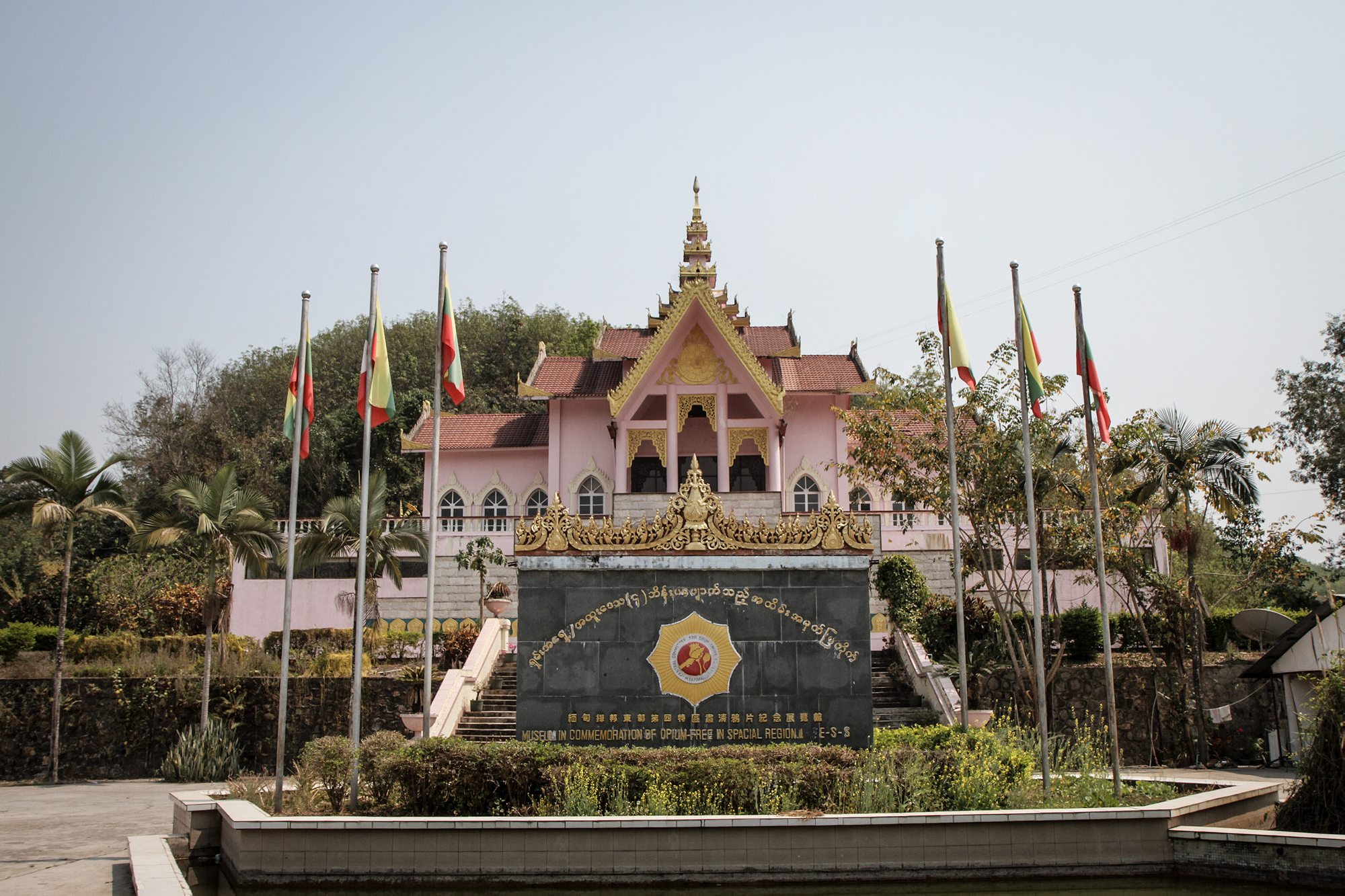
Yet the initial ceasefire agreements did not lead to a peace treaty or any integration of the region. Far from it, the groups demanded, and received, conditions that granted a great deal of autonomy, including the retention of their military capacity. It’s estimated that today the UWSA alone has command of over 30,000 men.
This limbo between war and peace continued for the next two decades, and, in its own way, the region thrived: The respective rulers remained close to one another and governed their fiefdoms unmolested. So while their counterparts in the Burmese Military ran a repressive crony operation with underhand business dealings, the heads of the border regions followed their own injurious path and raised revenue through drugs and shady business deals with their partners in Yunnan.
This town was seemingly filled with drugs, gambling, and prostitution
Over the past year Mong La has found itself the subject of renewed interest, its notoriety growing with each new sensational “exposé.” Recent coverage from the BBC, TIME and the New York Times paint a shallow but vivid picture of a “City of Sin,” a “Burmese Las Vegas,” a debauched “Wild East” outside the control of Burma’s central government. The region, and this town in particular, was seemingly filled with drugs, gambling, and prostitution. I had to see it for myself.
After taking off from Yangon, I survey the changing terrain below from the window of a slim and rather splendid ATR72 propeller plane. We fly north, roughly following the flat basin of the Irrawaddy River before veering east after Mandalay, the landscape slowly transforming into a canvas of green, undulating hills. Along a small plateau, I spot my last stop, Kyaing Teung, situated in the heart of the infamous Golden Triangle, and just 52 miles southwest of Mong La.
Kyaing Teung is a rather beautiful town where gentle hills are dotted with golden pagodas and several bodies of water, including the picturesque Naung Tong Lake. It’s a fairly popular tourist destination and is also, incidentally, home to liaison offices for both Mong La and the Wa.
Ethnic armed groups continue to exploit the geography
While relations remain cordial, a special permit is still needed to pass the numerous military checkpoints between the Kyaing Teung and Mong La. Thankfully, decades of uninterrupted peace between the NDAA-ESS and Burma proper have made acquiring that permit simple. No bribes are paid and no suspicious officials provoke or prevaricate.
Soon after I find myself in a breathtaking drive through the Shan hills—breathtaking in part because of the untouched green vistas, and in part because of the blind hairpin corners that we round with gusto. The severity of the land makes it clear why Shan was never truly under the control of the British colonizers when they claimed dominion over Burma.
The region has long been ruled through a number of separate principalities, each under their respective Sawbwas, or Lords of the Sky. These old rulers were once the only way the British, and the Burmese after them, contrived to enforce any influence over the domineering lands of Shan. A single group hoping to control the entire region would struggle with the harsh terrain, and today, in their own way, the ethnic armed groups continue to exploit the geography.
The location of these groups—immediately along the border with China—has provided them with a degree of covert, and not so covert, trade and support that has proven invaluable to their development and survival. Paul Keenan, a senior researcher on the region for the Burma Centre for Ethnic Studies, told me that he couldn’t imagine with whom else these groups were doing business, other than with the Chinese in Yunnan.
Beijing has invested billions of dollars in energy and development projects throughout Burma
Yet recent history has seen big changes that hint to a potential geopolitical shift. Burma’s military government, for several decades ruled under a self-imposed isolationist policy drearily titled “The Burmese Way to Socialism,” has opened up in the last five years and made rapid steps towards reform and liberalisation. As a result, Western sanctions have been dropped and Burma now promises a future of increased capability.
Meanwhile, Beijing has invested billions of dollars in energy, extractive and development projects throughout Burma, including $2.54 billion oil and natural gas pipelines that run from the Bay of Bengal through to Yunnan, its conduits flirting with the boundaries of Kokang, where recent fighting has raised apprehensive eyebrows on both sides of the border.

Back in the taxi, I check my watch, trying to estimate how close we are to entering Mong La, the de facto capital of the zone known as Special Region 4. The driver rounds yet another speculative corner with unabashed confidence and I suddenly find myself upon a sharp valley.
The dark green hills on either side loom ominously over the road. As we draw closer I begin to notice four or five camouflaged pillboxes embedded in the hills and pointlessly try to peer into the black slits. I have no idea if they are occupied or empty. A handsome guard with a rifle waves us to stop and takes my permit while I cautiously survey the rest of the checkpoint from my passenger seat. Planted all over are flags with the insignia of the NDAA-ESS.
“Welcome to Special Region 4,” reads a large, peeling sign.
Strangely enough, within Special Region 4 even the land itself seems to change. The terrain no longer feels as unsullied—even the gentler hills give the impression they have been tended to by a prodigious landscaper. For the first time in the trip we run into real traffic. Huge lorries grunt their way up inclines, some filled with basic aggregate; others carrying dozens of metal barrels, black oil leaking from the rust. The Chinese company names “LiuGong” and “Sinomach” are proudly emblazoned on most of the machinery.
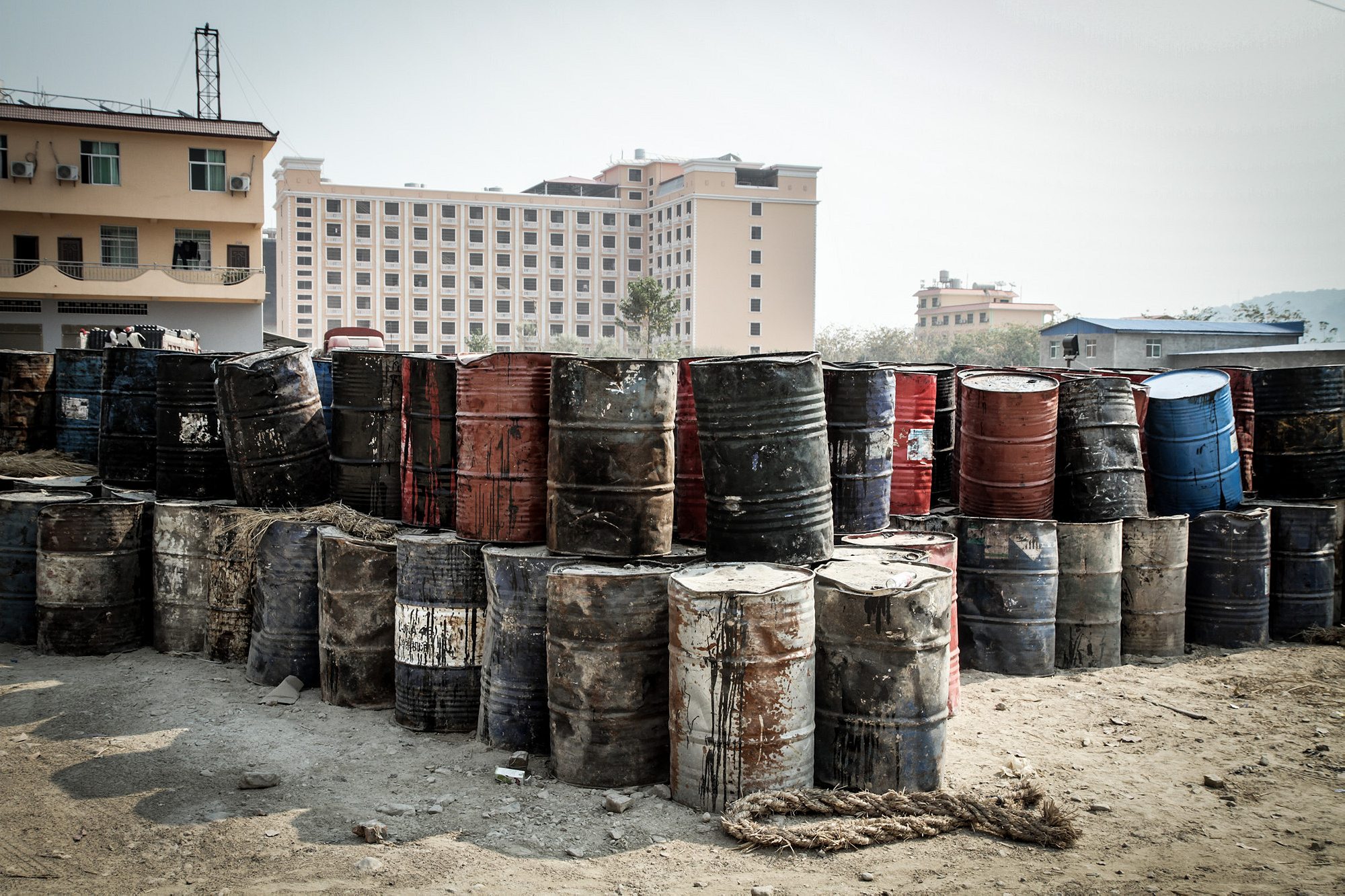
Our road detours onto a rough, loose gravel path while what looks like a four-lane highway nears completion. The air is filled with yellow dust and the hills exposed of their red-brown rocks. Alongside the road, indigenous trees are mostly felled, replaced instead with banana and watermelon plantations. Construction is underway everywhere.
We round another corner and a large, gleaming-white casino garishly called Galaxyse appears. Just beyond it, a pristine golf course stretches away from sight. Where once there were huts and agriculture, now there is high speed Internet, pristine fairways, and all-you-can-eat buffets.
Looking around, it’s hard to believe that 20 minutes earlier I was high in the untouched greenery of the Shan mountains. It’s hard to believe I’m still in Burma at all.
In the near distance I begin to see an outline of the town itself, or rather, I can make out the tall hotels that could only mean Mong La. My taxi driver pulls up outside the central market and I slowly trudge my way to a nearby hotel where a Chinese-American friend, who had arrived from China two days before, was waiting.
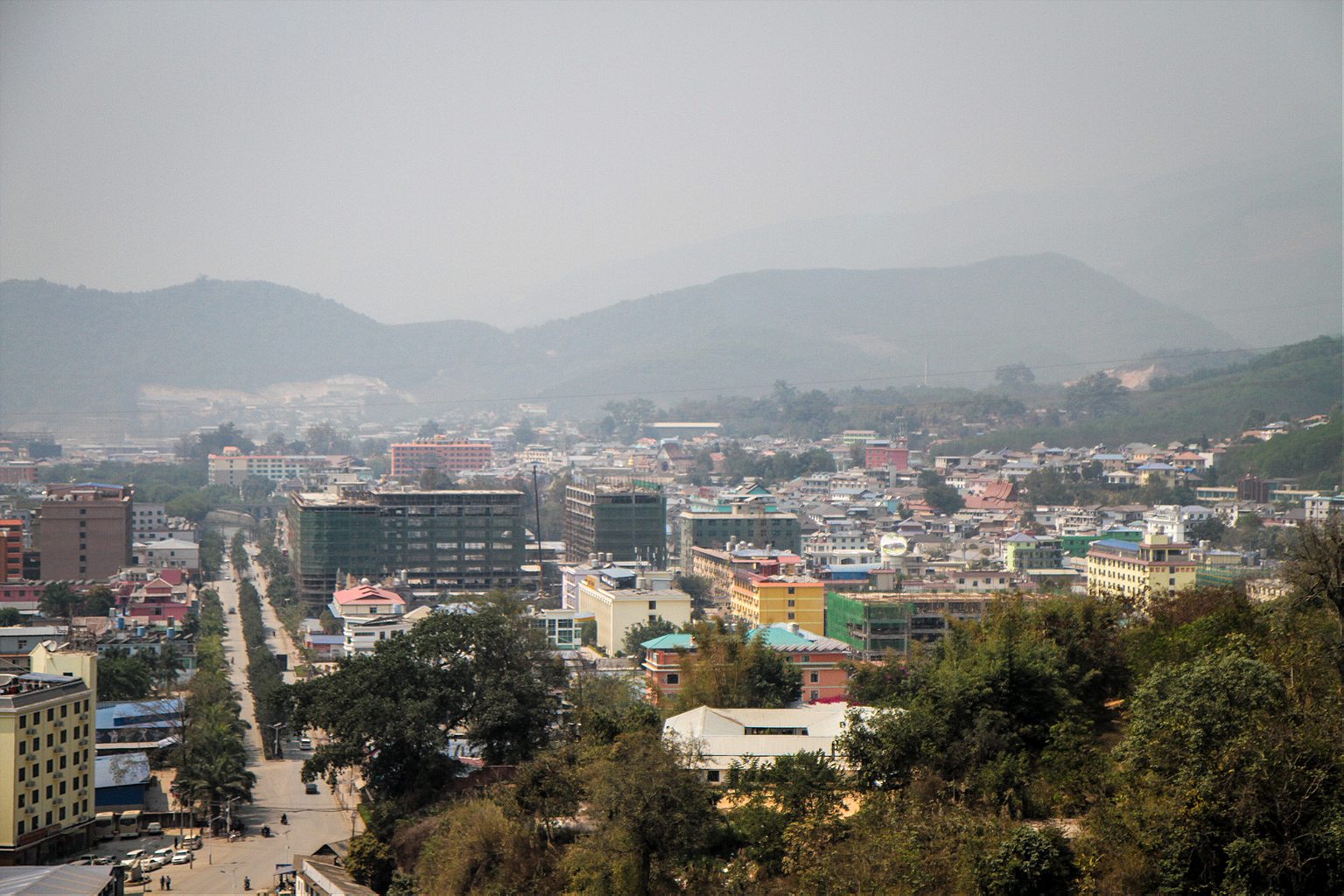
The city itself is surprisingly simple, almost quaint if not for the hotels and heavy construction. Acting as locus is the marketplace, a square some 400 meters in length, split into quadrants and with a tiny roundabout at the middle. Nearby, the muddy Namp Ma creek oozes through the town and above, some distinctly Burmese Pagodas dot the hills, arguably the only real reminder that you are not on the Chinese side of the border.
It’s true that many shops still carry the Burmese script, but it’s difficult to consider them as much other than a forgotten footnote; the Burmese on many signs often left to fade away with time.
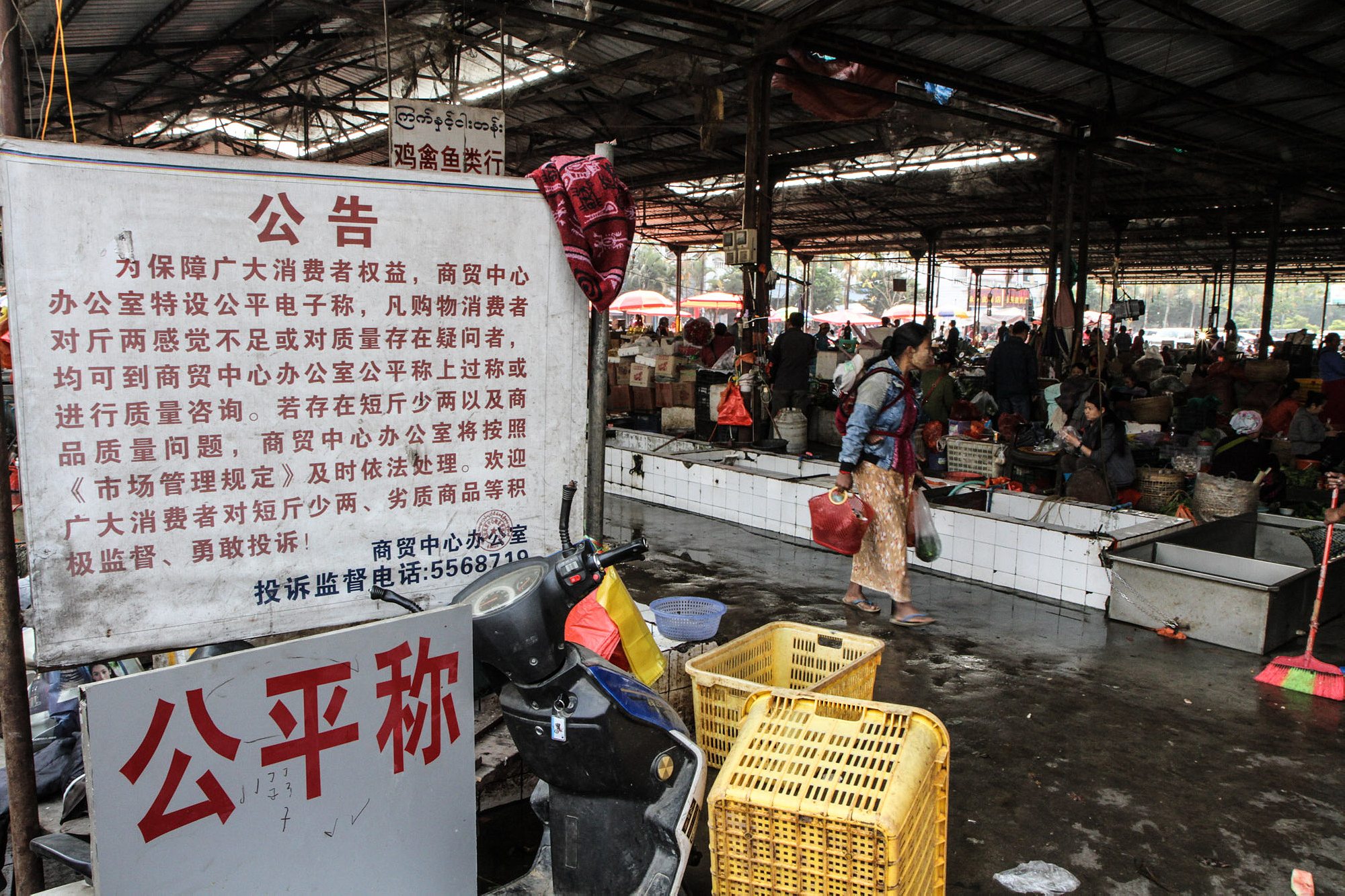
In my early vigor I begin making note of every distinctly Chinese thing I see. The architecture, the signs, the language, the cell phone networks, the shops, the money, the power grid, the food—it all screams China. The town, as my friend puts it, “looks almost like any other fourth-tier industrial Chinese town.”
After our quick tour, my friend and I sit down in a central market drinking station and call over the owner-cum-waiter. A moustachioed man from Nanjing strolls over and brings us two of the house beers: Tsingtao.
I sit back and casually watch the other punters at our host’s bar. It’s suddenly clear that the very tables at which we are sitting also double up as automated electronic mahjong tables. Gambling is technically illegal in both Burma and China, so I guessed everyone was seemingly making the most of any opportunity. I soon afterwards realized that such opportunities are practically everywhere.
Early the next morning, my friend and I decide to venture to the corner of the market where the endangered animal goods are sold. When we arrive just a few sleepy men and women display their illicit goods among fishmongers and vendors of watermelons. The most objectionable artifacts on offer—pangolin hides, tiger penis, bear paws—were surprisingly few in number and of questionable authenticity.

A little underwhelmed, that evening we passed the town’s red light district where healthy looking women handed out business cards and spoke cordially with enquiring Chinese men. Many simply hung out in their open brothels, talking and laughing amongst themselves.
It occurred to me that once this border region’s obscure context is considered, Mong La’s mystical aura quickly disappears and the city’s peculiarities become more typical of the region at large. In Wa, the UWSA have built Chinese-backed casinos too. The signs in Wa and Kokang are in Chinese, and the most common language used is Chinese. Most towns here, like Mong La, are hooked to China’s electricity grid and prefer the use of the renminbi. Yet the commonalities run deeper than just appearances or exploits in the illicit.
After decades of cross-border contact, intermarriages have further clouded already blurry ethnic lines and regional relationships. Many people carry two spellings of their name: one Chinese and one Burmese. The leader of Mong La is a case in point and starting with him, we quickly discern one example of relations that run across the entire borderlands.
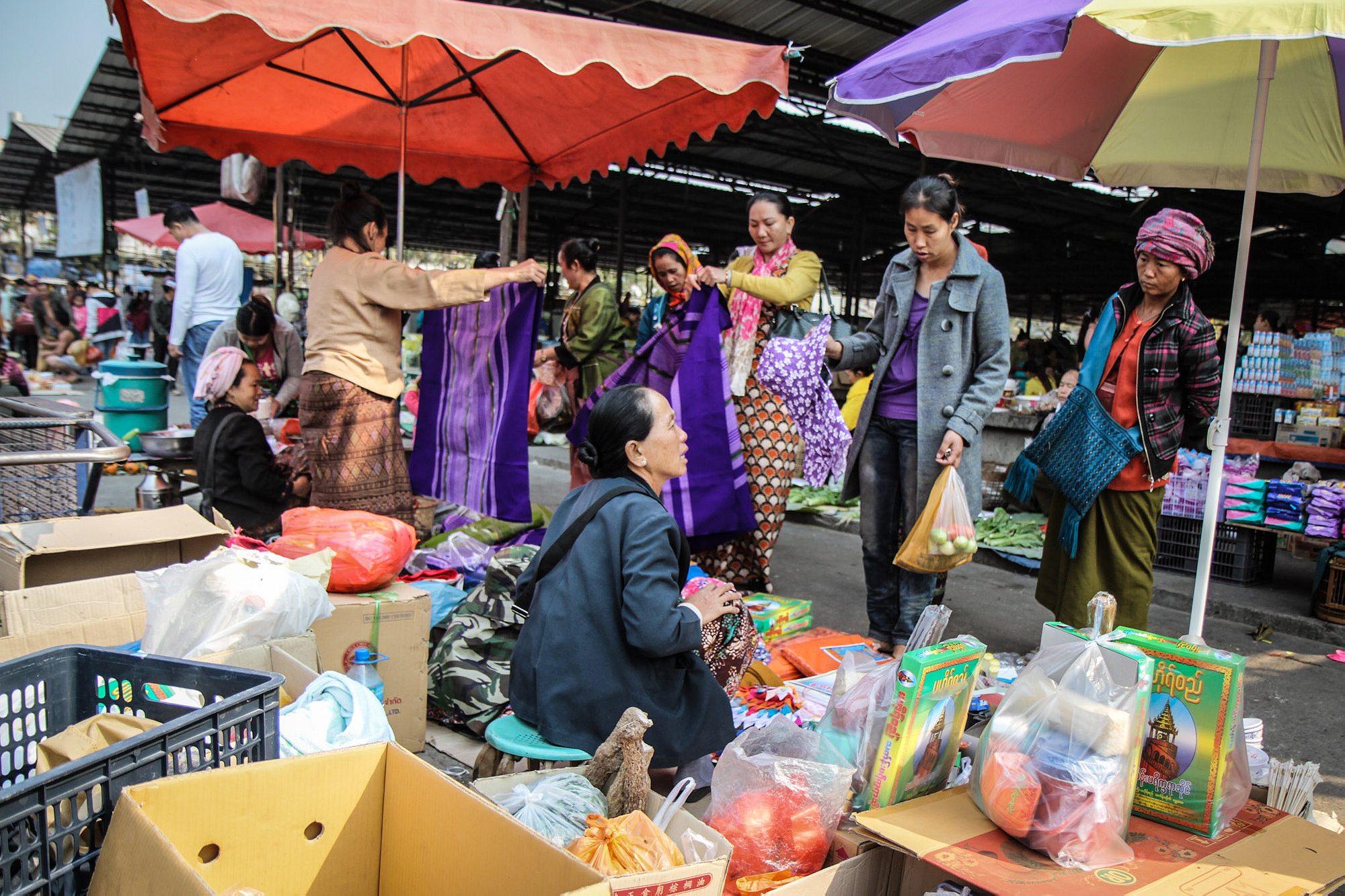
Sai Leun (or Lin Minxian) is Shan-Chinese, a known drug lord and the son-in-law of Peng Jiasheng, the long-time ruler of the Kokang region.
Peng Jiasheng, an ethnic Han Chinese octogenarian druglord, commanded the CPB’s Kokang forces in the 1980s, and later spent time in Panghsang, the one-time capital of the CPB, now the de facto capital of Wa State.
The Wa, for their part, are the strongest ethnic armed group in the country. Their 30,000 fighters pose a serious deterrent to any consideration of intervention by the Burmese government. Yet more than their numbers, the UWSA have a capable military arsenal that is almost entirely obtained from China.
A Shan Nationalities League for Democracy (SNLD) member put these dynamics in layman’s terms when we met before my trip: “The Kokang and Mong La won’t do anything without consulting the Wa, and the Wa won’t do anything without speaking to China.”
Yet with Beijing entering into ever more lucrative deals with Burma proper, the ethnic armed leaders and their business partners in Yunnan – those most invested in consolidating the status quo – recognise a changing landscape. Too much ostentatious chaos could now risk an intervention from Beijing or Naypyidaw; an intervention that would imperil the fiefdoms they have come to dominate and profit from.
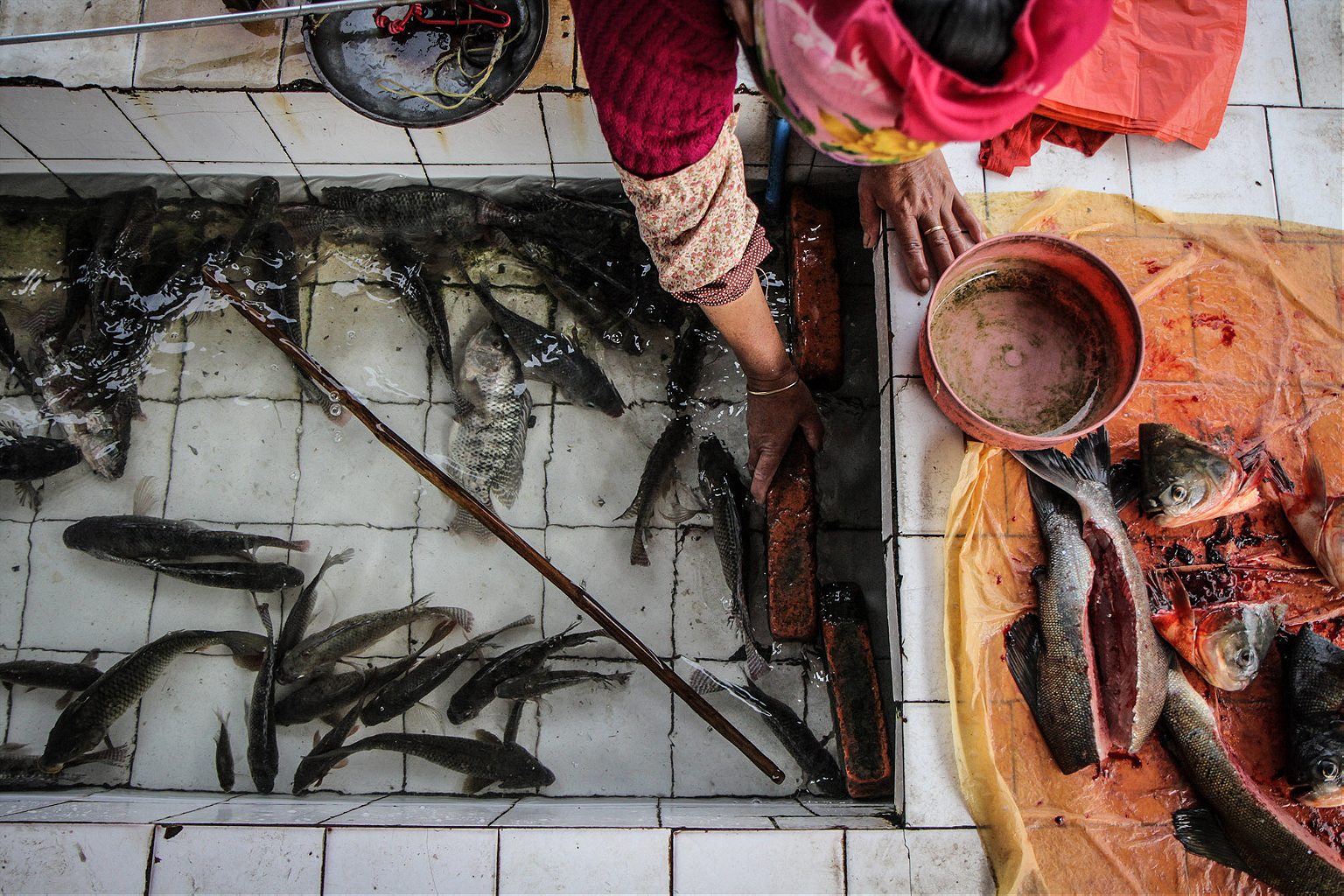
These dynamics came to light when Peng Jiasheng was ousted from Kokang in 2009 after the Burmese exploited a split in his MNDAA. Almost none of the other groups stepped in to help. It seemed that at least one group in the region had fallen under the control of the Burmese government. But earlier this year Peng Jiasheng came back with a vengeance. On February 9, just three days before the country commemorated Union Day, he launched a bloody counter-offensive to regain control and the fighting remains unresolved—a nearly impossible feat without some kind of support, or so the Burmese government says.
The accusations have been flying thick and fast: Who is helping Peng Jiasheng to reclaim Kokang? China, the Wa, and Mong La have all had to deny supporting the ageing warlord.
So while the fighting in Kokang continues, and the accusations towards China, the Wa, and Mong La persist, construction grows in the de facto capital of Special Region 4. Chinese tourists are the bread and butter of Mong La, and hotels with names promoting the tripled symbol, jin, or gold, continue to promise riches to their guests. Gambling is the main attraction now.
Back in Mong La’s marketplace from my seat at the aptly named Kokang restaurant, I watch while the other men and women ready themselves for yet more gambling. Everyone carries a bulging man bag of cash, slung over a shoulder or tied to the waist. Cars bearing the license plates “SR4…” registered in Mong La, “SHN…” registered in Shan, and several Chinese license plates, registered in Yunnan, once again head out into the night for the chance to make a fortune, or lose it all.